The main function of the
wheel bearing is to load and provide precise guidance for the rotation of the hub. It is both an axial load and a radial load and is a very important component. Conventional automotive wheel bearings are a combination of two sets of tapered roller bearings or ball bearings. Bearing installation, oiling, sealing and adjustment of the clearance are all carried out on the car production line. This structure makes it difficult to assemble in a car production plant, high in cost, and poor in reliability. Moreover, when the car is being repaired at the maintenance point, the bearing needs to be cleaned, oiled and adjusted. The hub bearing unit has been developed on the basis of standard angular contact ball bearings and tapered roller bearings. It combines two sets of bearings. Its assembly performance is good. It omits clearance adjustment, light weight, compact structure and large load capacity. It is a sealed bearing. It can be pre-loaded with grease, omitting external hub seals and free of maintenance. It has been widely used in cars, and there is also a tendency to gradually expand applications in trucks.
During the maintenance process, it is often found that some vehicles have large running noise, and the tires are checked for no abnormal wear, and there is no abnormal noise in turning the wheels on the lift. This phenomenon is often caused by abnormal damage to the wheel bearings. The term "abnormal" refers to bearing damage caused by installation reasons. The front wheel bearings of automobiles are generally double row ball bearings. If the hammer is used for installation when installing the bearing, or when the bearing is installed into the bearing housing by installing the inner ring of the bearing, the bearing race of one side will be damaged. Noise is generated when the vehicle is running, and no significant noise is heard when the wheel is off the ground due to the better side of the raceway. Proper installation is the key to long bearing life.

 Wheel Bearing
Wheel Bearing is a set of steel balls or rollers held together by a metal ring called a race. They help wheels spin fast with as little friction as possible. View More
Wheel Bearing
Wheel Bearing is a set of steel balls or rollers held together by a metal ring called a race. They help wheels spin fast with as little friction as possible. View More Wheel Bearing Kits
When you need to change the wheel hub bearing,you also need to replace many other parts at the same time,such as hub nut,bolt,seals,split pin,and so on. View More
Wheel Bearing Kits
When you need to change the wheel hub bearing,you also need to replace many other parts at the same time,such as hub nut,bolt,seals,split pin,and so on. View More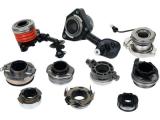 Clutch Release Bearing
Clutch Release Bearing is what presses down on the rotating spring plate or "pressure plate" to release the clutch disk. View More
Clutch Release Bearing
Clutch Release Bearing is what presses down on the rotating spring plate or "pressure plate" to release the clutch disk. View More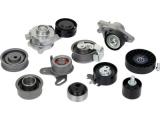 Belt Tensioner
A Drive Belt Tensioner is a pulley mounted to either a spring mechanism or to an adjustable pivot point that is used to keep constant tension on your serpentine belt. View More
Belt Tensioner
A Drive Belt Tensioner is a pulley mounted to either a spring mechanism or to an adjustable pivot point that is used to keep constant tension on your serpentine belt. View More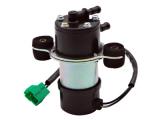 Fuel Pump
AiX provide you with the high quality of electric fuel pump and fuel pump assembly.Fuel pump assembly is one of the vital components of fuel injection system for EFI vehicle. View More
Fuel Pump
AiX provide you with the high quality of electric fuel pump and fuel pump assembly.Fuel pump assembly is one of the vital components of fuel injection system for EFI vehicle. View More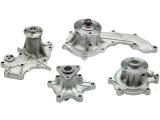 Water Pump
The reliable and effective operation of an automobile engine requires the cooperation of many parts. View More
Water Pump
The reliable and effective operation of an automobile engine requires the cooperation of many parts. View More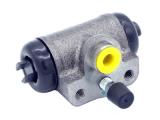 Wheel Brake Cylinder
When you want your car to slow down or stop, you need to take the brake operation. At this point, you need to step down your brake pedal. View More
Wheel Brake Cylinder
When you want your car to slow down or stop, you need to take the brake operation. At this point, you need to step down your brake pedal. View More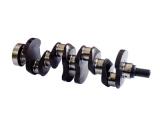 Crankshaft
Crankshaft is also known as crank.It is the important part of an engine to convert the up and down motion of the pistons into horizontal rotation.It is usually made by cast iron or forged steel. View More
Crankshaft
Crankshaft is also known as crank.It is the important part of an engine to convert the up and down motion of the pistons into horizontal rotation.It is usually made by cast iron or forged steel. View More VVT PHASER & OCV
VVT is the abbreviation of Variable Valve Timing. VVT PHASER is the vital component for the VVT engines. View More
VVT PHASER & OCV
VVT is the abbreviation of Variable Valve Timing. VVT PHASER is the vital component for the VVT engines. View More






 +86-18758057736
+86-18758057736 
 TEAM 21,XIEJIA VILLAGE, PUYANG TOWN, XIAOSHAN DISTRICT, Hangzhou, Zhejiang Province, China
TEAM 21,XIEJIA VILLAGE, PUYANG TOWN, XIAOSHAN DISTRICT, Hangzhou, Zhejiang Province, China 